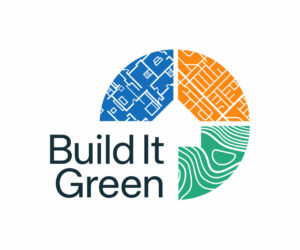
BIG’s innovative new program leverages multiple funding sources to deliver energy and healthy home upgrades simultaneously to benefit California’s most vulnerable populations
Build It Green (BIG) is proud to announce that its innovative Healthy Home Connect Program is expanding to new communities, thanks to a $75,000 award from Peninsula Clean Energy (PCE). The program will deliver health and energy upgrades to up to 16 low-income homes in East Palo Alto, CA and Daly City, CA—homes that would otherwise be disqualified from housing assistance programs.

The generous funding from PCE allows BIG to expand its pilot program, which launched earlier in 2018 in the low-income community of Belle Haven through funding from Facebook. BIG’s vision is to scale the program statewide, providing assistance to residents in low-income communities across California.
“We are excited to be able to leverage Peninsula Clean Energy funds to address critical home needs of some of the most vulnerable members of the community,” said Karin Burns, Executive Director of Build It Green.
Housing services for low-income communities are often siloed and delivered inefficiently. Energy efficiency and weatherization programs do not address home health conditions, which are often closely related. Furthermore, many homes are disqualified from receiving energy efficiency and solar PV improvements because of existing conditions in the home, such as mold, moisture, unsafe HVAC systems leaking carbon monoxide, or dilapidated roofs. The result is that some of the most vulnerable families are left behind and must live in homes that exacerbate asthma and other health conditions, as well as homes that are inefficient with high utility bills, contributing to displacement and the affordable housing crisis.
Healthy Home Connect addresses this problem by combining public funding sources with private philanthropy, and delivering programs simultaneously. BIG will work with its on-the-ground community partner, El Concilio of San Mateo County, to deliver the following:
A key to the program’s success is the use of Hayward Score to identify unhealthy conditions in low-income homes. This patent-pending web-enabled tool, built by the best minds in the healthy homes industry over the past three years, provides a survey, home score, and a customized set of recommendations outlining steps to improve the health and safety of their home. Hayward Score’s targeted survey questions and refined algorithms typically achieve the same level of accuracy as expensive indoor air quality testing, which most residents cannot afford.
Healthy Home Connect will result in homes that are:
“Safe, affordable, and healthy housing is foundational to enabling quality of life for individuals and families, especially vulnerable populations and children,” explained Burns. “At the same time, there is a strong link between health and energy efficiency in homes: energy upgrades often provide health co-benefits. That’s what makes Healthy Home Connect’s approach so unique. It can help communities simultaneously address the affordable housing crisis, the climate crisis, and the public health issues that affect thousands of individuals and families in low-income communities.”


Alex Coba
Communication Associate
As a proud California native from Stockton, Alex brings a wealth of experience and a versatile skill set. He has a solid communication background with a Bachelor of Arts in Journalism and Public Relations from California State University, Chico. Alex is adept at strategic communications and media relations, with experience gathering and sharing stories from his local communities that uplift the unique spirit and values of those places. He is excited to join Build It Green, where he can apply his talents to further BIG’s mission to help communities across California thrive